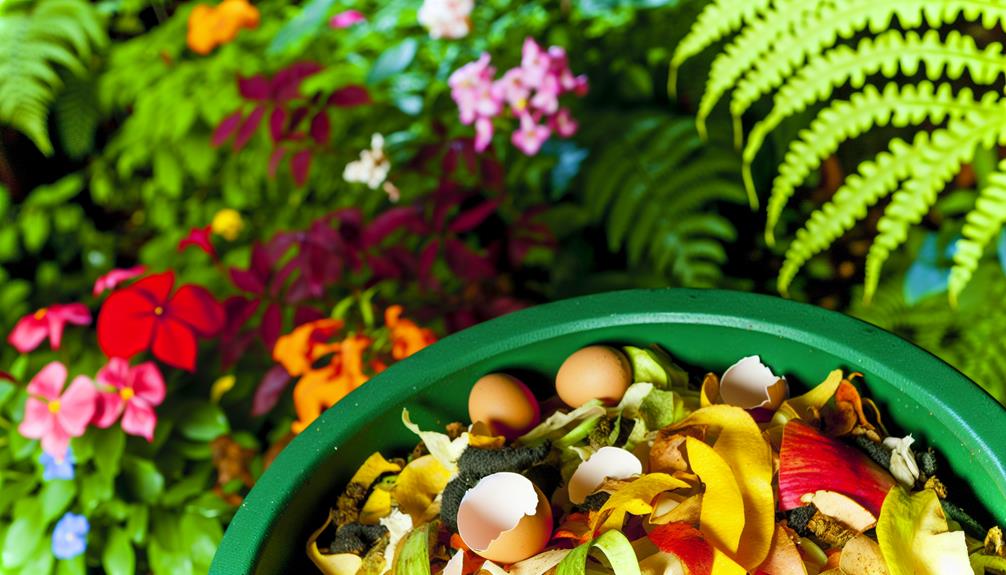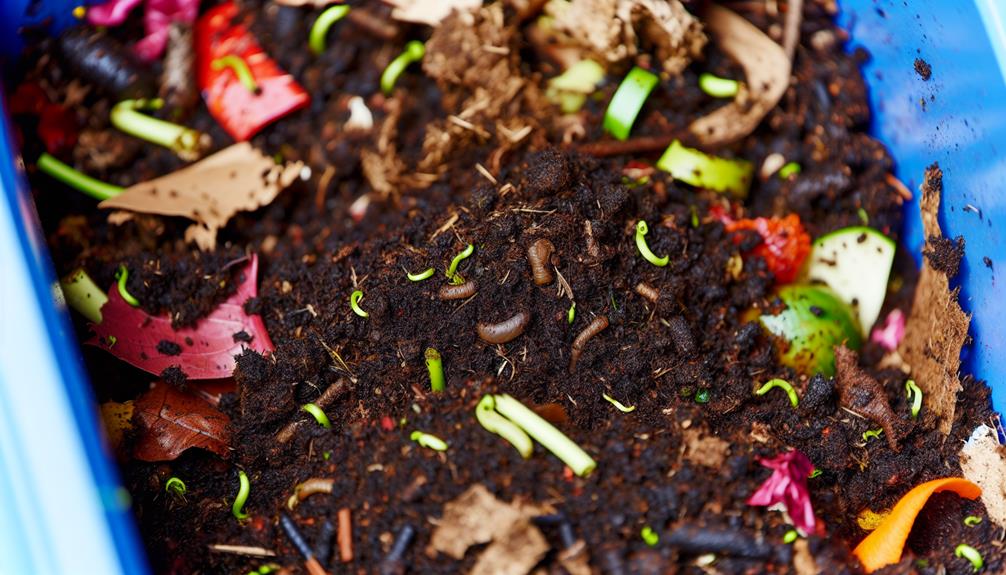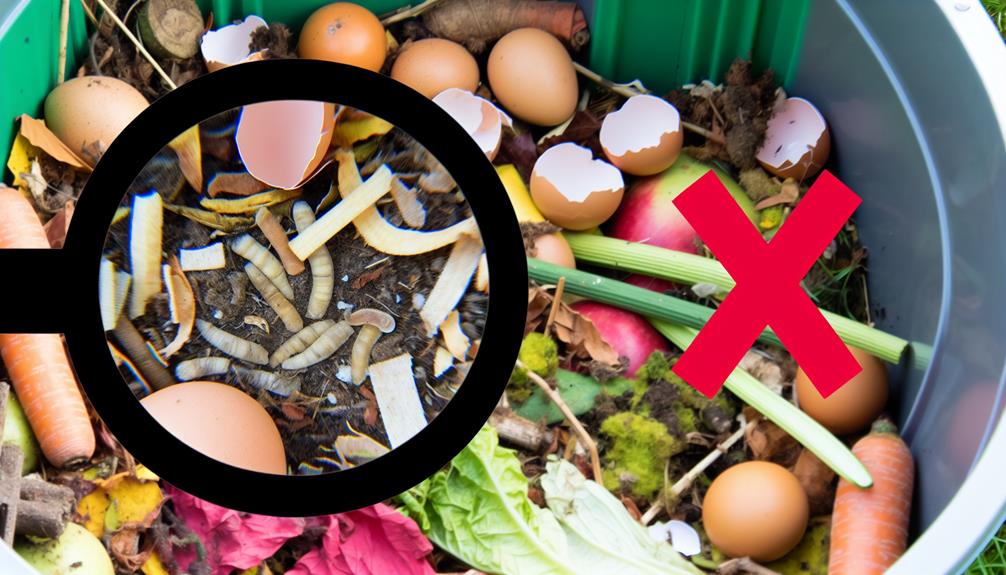

You can compost toenail clippings since they’re primarily composed of protein-rich keratin. Add them to your compost as a ‘brown’ material. To guarantee proper decomposition, mix the clippings with other compostable items and turn the pile regularly for better aeration. Make sure your compost maintains a proper balance of ‘green’ and ‘brown’ materials.
Be mindful that toenail clippings decompose slowly, so managing the moisture level and turning the pile is key. Including toenail clippings in your compost reduces waste and enriches the soil with valuable nutrients. To optimize your composting process and enhance results, there’s more to take into account.
To start composting effectively, you need to understand the basic principles that make it work. Composting is a natural process where organic materials break down into nutrient-rich soil. The decomposition rate depends on several factors, including the type of composting methods you choose, the balance of green and brown materials, and the conditions in your compost pile.
First, select a composting method that fits your lifestyle. There are various methods, such as traditional compost piles, vermicomposting using worms, and tumblers for quicker results. Each method influences the decomposition rate differently. For instance, a well-aerated tumbler can speed up the process compared to a static pile.
Next, focus on the balance of materials. Green materials, like fruit scraps and grass clippings, provide nitrogen, while brown materials, such as leaves and cardboard, supply carbon. A balanced mix promotes efficient decomposition and reduces odors.
Toenail clippings, often overlooked, are composed primarily of keratin, a durable protein that can eventually break down in a composting system. Keratin is a structural protein found in your nails, hair, and the outer layer of your skin. Its rigid and complex nature gives it a slower decomposition rate compared to other organic materials, but it’s not impossible to compost.
When you add toenail clippings to your compost pile, you contribute a unique material that adds diversity. The keratin structure, although tough, will gradually decompose, particularly when exposed to the right conditions. To speed up the decomposition rate, make sure your compost pile maintains a balanced mix of greens (nitrogen-rich materials) and browns (carbon-rich materials). Toenail clippings fall into the ‘browns’ category.
For better results, consider mixing the clippings with other smaller, more readily decomposable materials. This approach helps microorganisms break down the keratin more efficiently. Regularly turning your compost pile also promotes aeration, speeding up the overall composting process.
Also Read: Can You Compost Branches?
Composting your toenail clippings offers several eco-friendly benefits that contribute to a more sustainable lifestyle. When you choose to compost these small, seemingly insignificant items, you’re participating in an eco-friendly practice that reduces waste and supports nutrient recycling.

Instead of sending your clippings to a landfill, where they add to the growing pile of waste, you’re turning them into a valuable resource for your garden or compost bin.
Toenail clippings, like other natural materials, decompose over time and release nutrients back into the soil. This process of nutrient recycling helps enrich your compost, making it more fertile and beneficial for plant growth.
By integrating toenail clippings into your compost, you’re enhancing the overall quality of your compost mix. This means healthier plants and a more robust garden.
Moreover, composting toenail clippings is an easy way to reduce your environmental footprint. It’s a simple step that aligns with other eco-friendly practices you might already be doing, like recycling paper or reducing plastic use.
Also Read: Can You Compost Body Wash?
Wondering how you can start composting your toenail clippings effectively? First, make sure you maintain good nail hygiene by keeping your nails clean before clipping. This prevents any unwanted contaminants from entering your compost. Regular clipping frequency is important; aim to clip your nails every two to three weeks to keep the process manageable.
Next, collect your clippings in a small container. When you’re ready to add them to your compost, mix them well with other green and brown materials. Toenail clippings are rich in keratin, a protein that breaks down slowly, so they’ll need a balanced mix to decompose effectively.
Here’s a quick guide:
| Step | Action | Tips |
|---|---|---|
| 1 | Clip nails regularly | Every 2-3 weeks |
| 2 | Collect clippings | Use a dedicated container |
| 3 | Mix with compost materials | Combine with green (veggies) & brown (leaves) |
| 4 | Turn compost regularly | Promote even decomposition |
Turning your compost regularly ensures your toenail clippings break down evenly. It’s a simple process that, when done consistently, contributes positively to your compost’s nutrient profile. By composting your toenail clippings, you’re embracing a sustainable practice that benefits both your garden and the environment.
Also Read: Can You Compost Bones?
While adding toenail clippings to your compost can be beneficial, it’s easy to overlook common mistakes that can hinder the composting process. One of the most common errors is improper layering. To create a successful compost pile, you need to balance green materials (like kitchen scraps) with brown materials (such as dried leaves).

Toenail clippings fall into the green category. If you pile everything haphazardly, your compost won’t break down efficiently. Make sure to alternate layers of green and brown materials.
Another frequent issue is excessive moisture. Your compost pile needs to be moist but not waterlogged. Too much water can lead to anaerobic conditions, causing unpleasant odors and slowing decomposition.
To check for proper moisture, grab a handful of compost material and squeeze it. It should feel like a damp sponge. If it’s too wet, add more brown materials and turn the pile to improve aeration.
You might face health risks when composting toenail clippings, like spreading fungal infections or bacterial contamination. It’s important to make sure your compost remains safe and healthy for everyone in your community.
Toenail clippings typically don’t attract pests to your compost pile, but using pest deterrents like citrus peels or coffee grounds can help. Embrace your eco-friendly community, and practice good pest control to guarantee a healthy compost.
You shouldn’t compost painted or treated toenail clippings due to chemical residues. These chemicals can disrupt compost biodegradability factors, affecting your compost’s health. Stick to natural clippings to keep your compost pile thriving and eco-friendly.
You’re curious about the decomposition rate of toenail clippings in compost. They break down slowly, taking months to a year. Mixing them with other organic material helps speed up the compost breakdown, making your pile feel more inclusive.
You might consider mulching nails into your garden soil or exploring alternative recycling options. By doing so, you’re contributing to a sustainable community and finding creative ways to repurpose what would otherwise be waste.
By understanding composting basics and the composition of toenail clippings, you can effectively add them to your compost. Incorporate clippings into your compost pile by mixing them well with other organic materials. This guarantees even decomposition and nutrient distribution.
Avoid common composting mistakes like adding too many clippings at once. With these tips, you can turn your toenail clippings into valuable compost, enriching your garden naturally and reducing waste.
